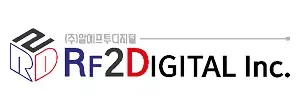John Shaw, an independent media consultant, reports that several developments over recent months show that broadcasters and regulators have come to a better appreciation of the ability of DRM to provide an economical and high quality solution for broadcasting services around the world – for any genre, any frequency band and any coverage requirement ranging from international broadcasting to community stations.
At VHF, several recent studies (see EBU report) have assessed how the DRM+ standard could be introduced into Band II in order to replace existing FM transmissions or to provide new services. These studies show that DRM+ can provide the same coverage, more economically than an FM broadcasting station, by using much lower power levels. DRM+ provides other advantages over FM, with the flexibility of being able to offer a wide range of subsidiary data services, multiplexed programming or single frequency networks. Moreover, DRM+ has the flexibility to satisfy any coverage need in Band II ranging from national and regional networks to community stations. Some technical compatibility problems with digital artefacts remain to be resolved where FM and DRM+ transmissions would continue to serve overlapping areas but, once the economic and technical advantages of DRM+ are seen in practice, the expectation is of a steady transition to digital sound broadcasting in Band II. DRM+ can also provide are high quality broadcasting services in Band I and III, where these are not already used for TV or DAB.
The advantages of DRM are perhaps even more impressive in the LF, MF and HF bands using DRM30 where economy and quality are concerned. Whereas DRM+ certainly matches the audio quality of FM in the VHF broadcasting bands, DRM30 is set to revitalise the bands previously used for AM broadcasting by bringing a superb audio quality, perceived as coming close to FM quality for most in-home and in-car use. The advantages of economy and quality are particularly attractive when considering upgrading national AM networks. The transition to DRM30 for MF broadcasting in India was announced in February 2010 and is now proceeding apace with orders for another 21 high power DRM30 transmitters confirmed in January 2013.
AM broadcasting in the LF, MF and HF bands can provide considerable advantages in terms of wide area coverage for regional, national and international sound broadcasting but has suffered a decline in recent years, as high electricity costs and poor audio quality, relative to FM and DAB, have conspired to make it less attractive to broadcasters. The replacement of wide area AM transmissions by FM or DAB networks will, however, require an investment in extensive infrastructure that may be problematic or impractical for serving some needs or for external broadcasts. The foresight shown by India in making the transition to DRM30 leads the way for re-engineering the LF, MF and HF bands around the world. Major savings in transmission power and electricity costs – down to between half or a quarter of conventional AM transmitter requirements – coupled with audio quality close to FM provide an opportunity for broadcasters offering international, national and regional services to cut costs, simplify their operations and attract new audiences to high quality programming.

















